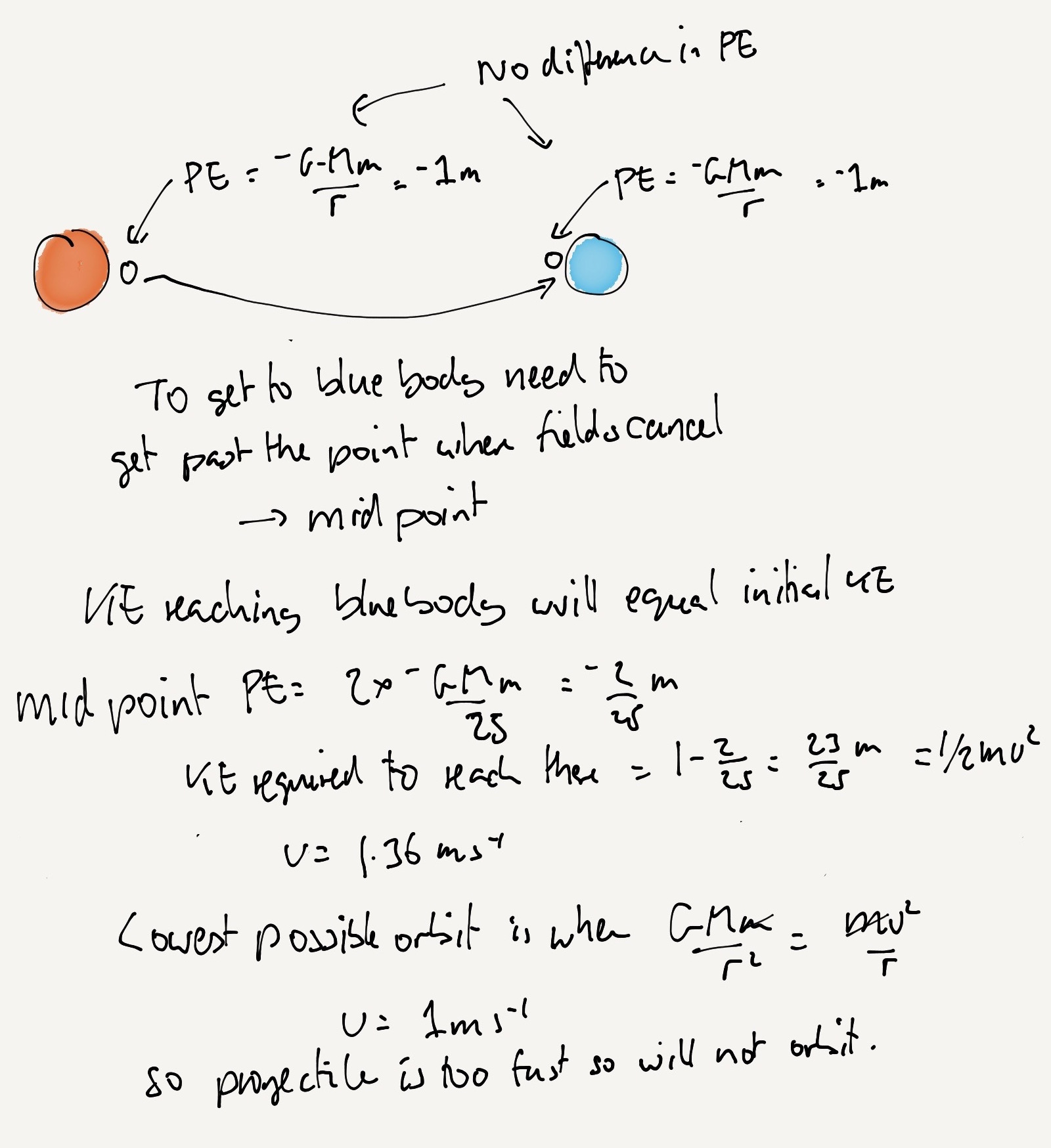Orbits teachers notes
Kepler's laws
(1) All planets move about the Sun in elliptical orbits, having the Sun as one of the foci.
(2) A radius vector joining any planet to the Sun sweeps out equal areas in equal lengths of time.
(3) The squares of the sidereal periods (of revolution) of the planets are directly proportional to the cubes of their mean distances from the Sun.
- Using Excel design an iterative model to show that these 3 laws are a consequence of Newton's universal law of gravity.
- Show that the total energy of an orbiting planet is constant.

The idea is to use the suvat equations for small steps where the steps are so small that the velocity can be considered constant, after each step the acceleration is calculated and used to find the new velocity.


And here is my spreadsheet
To show that Kepler's second law holds I imported an image of the graph into Geogebra and measured the areas for equal times by making polygons that fit.

Elastic orbits
A mass is made to travel in a circle on the end of an elastic string.
- Derive an equation for the relationship between the time period and radius.
- Design an experiment to test your hypothesis.
I set this up in Algodoo to see if the theory was right and it worked well.
mass was 0.123 kg
Original length 1m
k = 10 Nm-1


Algodoo orbits
In the Algodoo universe where G = 1 Nm2kg-2 there are two bodies with diameter 1m and mass 1kg separated by 50 m.
- Is it possible to project a small body from the surface of one so that it orbits the other?
I think it's probably impossible

